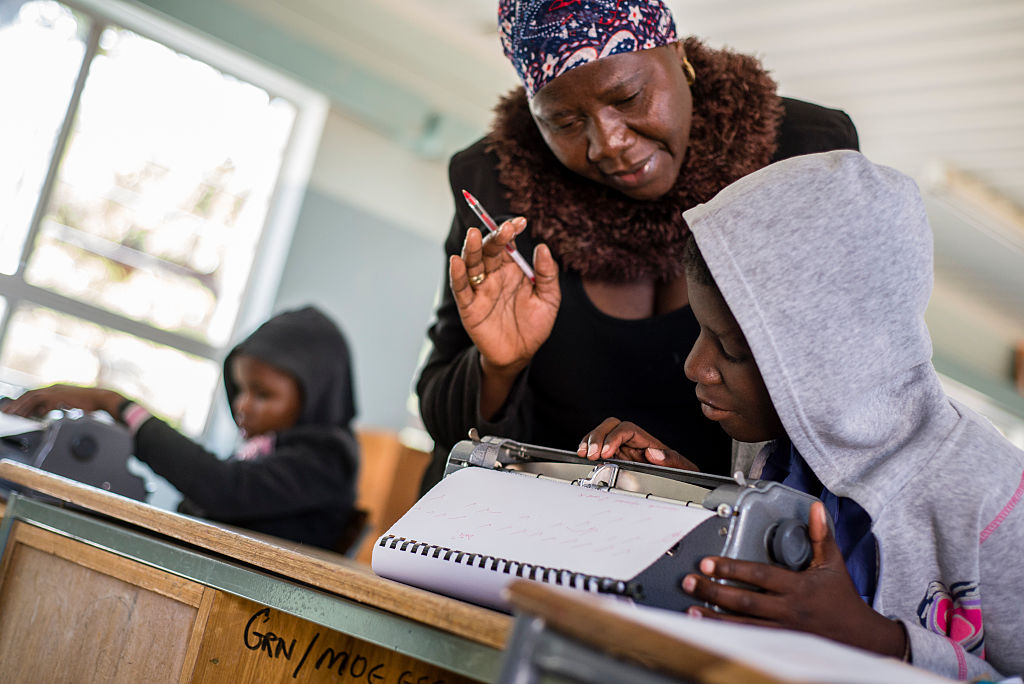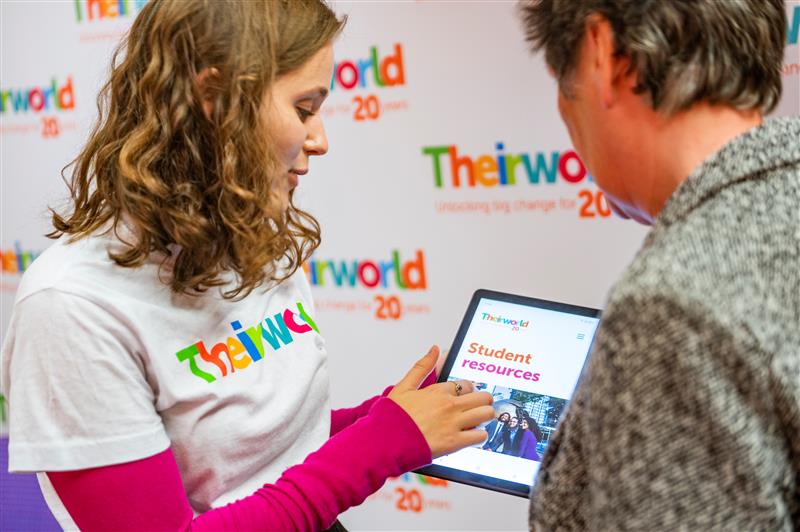
“People are quick to dismiss a disability if they are unable to see it”
Children with disabilities, Right to education, Teachers and learning
As a student and then a teacher in India, Global Youth Ambassador Kirthi Jayakumar has seen the challenges of "invisible" disabilities.
- On July 24, the United Kingdom government will co-host its first Global Disability Summit with the International Disability Alliance and the government of Kenya. It will bring together more than 700 delegates from governments, donors, private sector organisations, charities and organisations of persons with disabilities.
- In the run-up to the summit, we are publishing articles by Global Youth Ambassadors – a network of more than 900 young activists in over 80 countries.
One of the things that stands out in my memory of my earliest days as a student was the “othering” of persons with disabilities at school.
The inclusion of children with disabilities into our classrooms seemed conspicuous by its absence and, by and large, we grew up recognising children with disabilities as our “social service projects,” reserved for a Friday afternoon of “giving.”
By the time I was in grade nine, there was a shift in the attitude. In the younger classes, children with disabilities began to be included. Spaces at school began to have ramps and assisted learning facilities. Children who specifically needed it had scribes helping them write their exams.
Today, as a teacher, when I stand on the other side of a classroom, it warms my heart to see that the lines of exclusion are thinning and are completely absent in many classrooms that I go to. However, there is still further work to be done.
In my work so far, engaging with teachers on why we lag behind in the inclusion of children with disabilities, has revealed that a lot of teachers find it difficult to complete all the work needed to cover the entire syllabus on time for each academic year.
Ensuring that children with disabilities catch up with the rest of the class could, as one teacher put it, “slow down the class”.
Another major commonality across schools appears to be the lack of infrastructural resources to facilitate inclusion. Children do not have access to assisted learning, empathetic staff and mobility-centric resources.
In my experience I have found that people are quick to dismiss the existence of a disability if they are unable to visually see it.
The world around us reinforces the notion that disability is visual in its manifestation and has led to individuals confining their world view to just that.
As a consequence, children with autism spectrum disorder, or visual impairment rather than blindness, are not necessarily uniformly understood as children with disability.
This is something I have experienced on both sides of the classroom. As a student, my condition of club foot was neither acknowledged nor considered as a disability because I “forced” myself to walk “normally,” as I was medically and socially mandated to.
As a teacher, I notice that a classroom is homogenised into what a student appears to be like, on the surface.
To tackle this, before I begin a session my first request to the class is for my students to tell me if they require any particular things to be done for them to feel physically, mentally and emotionally comfortable in class.
At first, the children were reluctant – to speak up, to share or to even consider the fact that a teacher was going to do this for them. But when I began to do this in every session, they realised that I was operating from a place of empathy.
More and more schools and colleges are establishing access to education through assistive technology, which helps create improved academic experience for people with disabilities.
This involves digitisation of reading materials, computer access, different modes of examination, accessible websites and mobile apps.
These steps are making a considerable difference for children with disabilities and we need to commit to continuing this good work to ensure equal access for all.
More news

